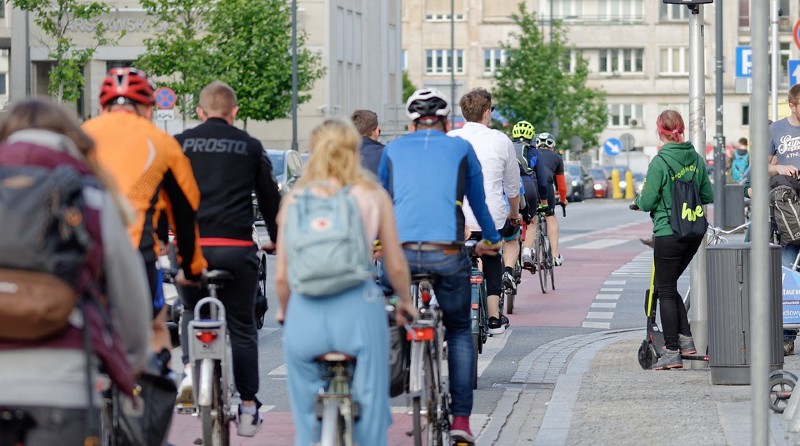Investment in cycling and walking saves money and lives, says Cycling UK
According to a new report from the green thinktank, the Government is still not doing enough to limit energy demand in areas such as transport and buildings, says Cycling UK.
The Green Alliance says the Government’s current approach to energy is ‘self-defeating’ and it should be taking more steps to encourage people out of their cars if the UK is to cut emissions to net zero by 2050.
By encouraging people to cycle and walk more, instead of using their cars, not only would emissions reduce but public health would improve and the risk of early deaths due to air pollution and poorly heated homes would decline.
Libby Peake, Head of Resource Policy at Green Alliance, said the Government’s current method in tackling this, “ignores half the equation and denies people considerable benefits.”
“Not only would reducing demand help to reach carbon reduction targets earlier, it would also reduce infrastructure costs and benefit everyone – through cleaner air and healthier lives,” she continued.
Rather unsurprisingly, transport has been revealed as the largest emitting sector in the UK. The thinktank says current policies to tackle air pollution in UK will fall short of what is needed, with The Green Alliance projecting a reduction of only six million tonnes compared to the 70 million tonnes a year needed by 2032.
The report, based on research by the Centre for Research into Energy Demand solutions, reveals switching just 1.7% of car journeys to walking and cycling would prevent an estimated 65,000 early deaths from air pollution. The switch would also deliver £2.5 billion in health benefits, predominantly through a reduction in diabetes and cardiovascular disease.
Cycling UK Head of Campaigns, Duncan Dollimore, said: “The maths are simple and the evidence overwhelming: investment in cycling and walking saves money and lives. At least 10% of the transport budget could make a difference to the way we travel and should be a priority for the Government in the next budget.”
Figures have revealed there is also a lot of scope to increase walking and cycling with the right infrastructure in place. Over half of car journeys made (58%) are less than five miles, and it is estimated that half of these trips could be easily substituted with walking and cycling.
The report also pointed out emerging trends towards paying for services, instead of owning products such as cars or appliances, would also help to reduce energy demand. Bike share schemes and public transport are options already in existence in this kind of model, and would seem worth investing in more if the Government hopes to hit its 2050 target.
Other forms of mobility, such as e-Scooters, would also help to reduce emissions and air pollution as an alternative to petrol and diesel vehicles. A consultation into potentially legalising public use of e-Scooters is to launch in February, with the Government reportedly keen to align legislation with e-Bike rules.
“It’s incredible that the penny hasn’t dropped yet,” he continued. “Getting more people moving more actively is such a quick, comparatively cheap, and easy way to help climate, air pollution, inactivity related public health and congestion related crises that it begs the question: why wouldn’t you do it?”



